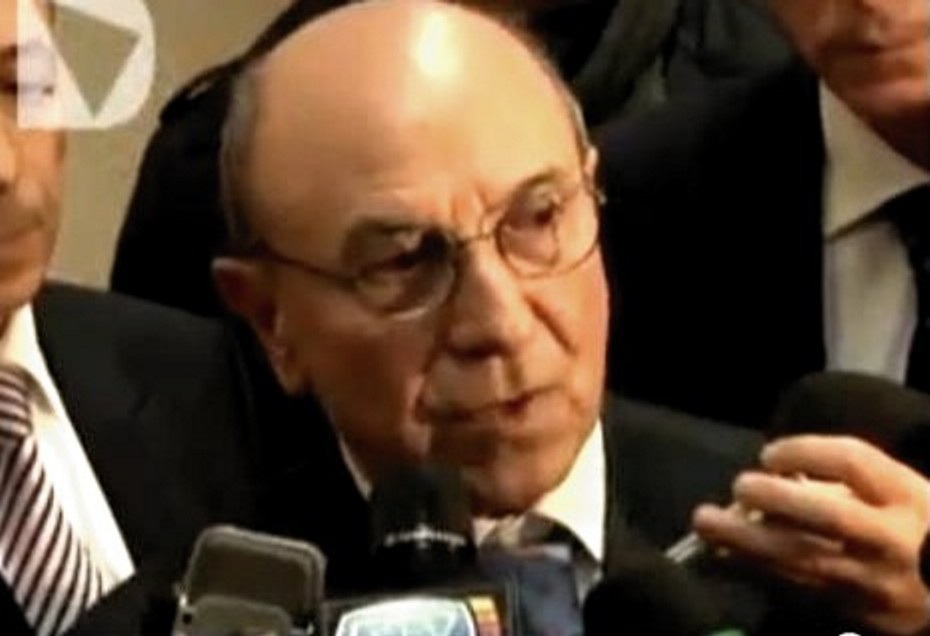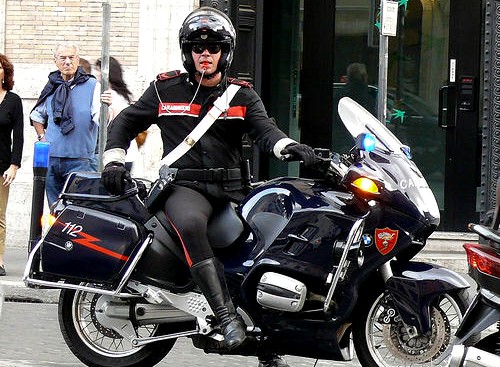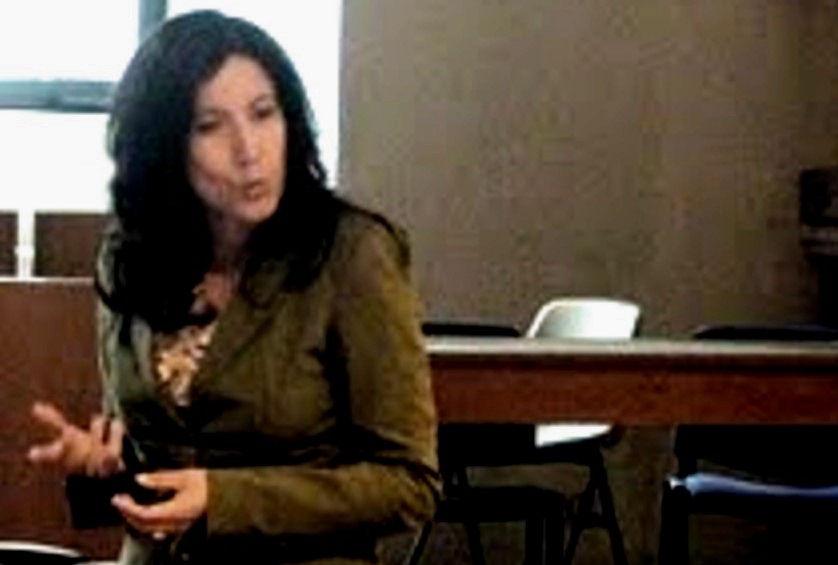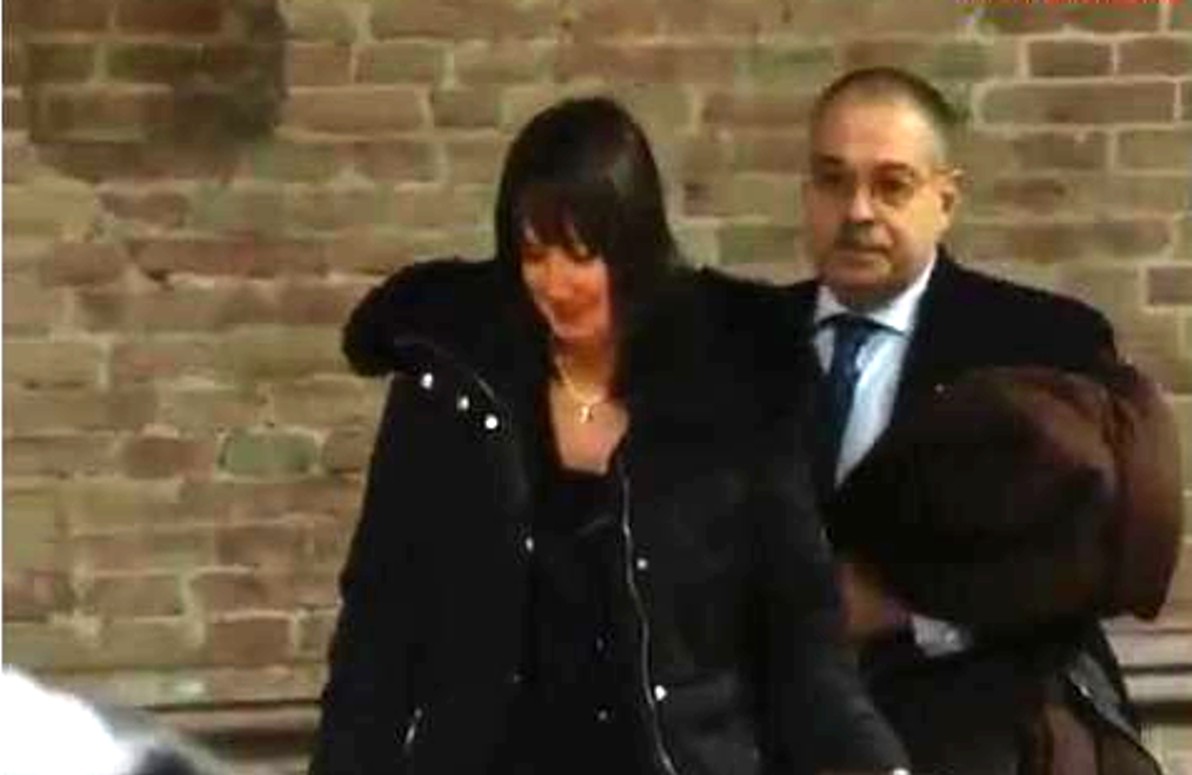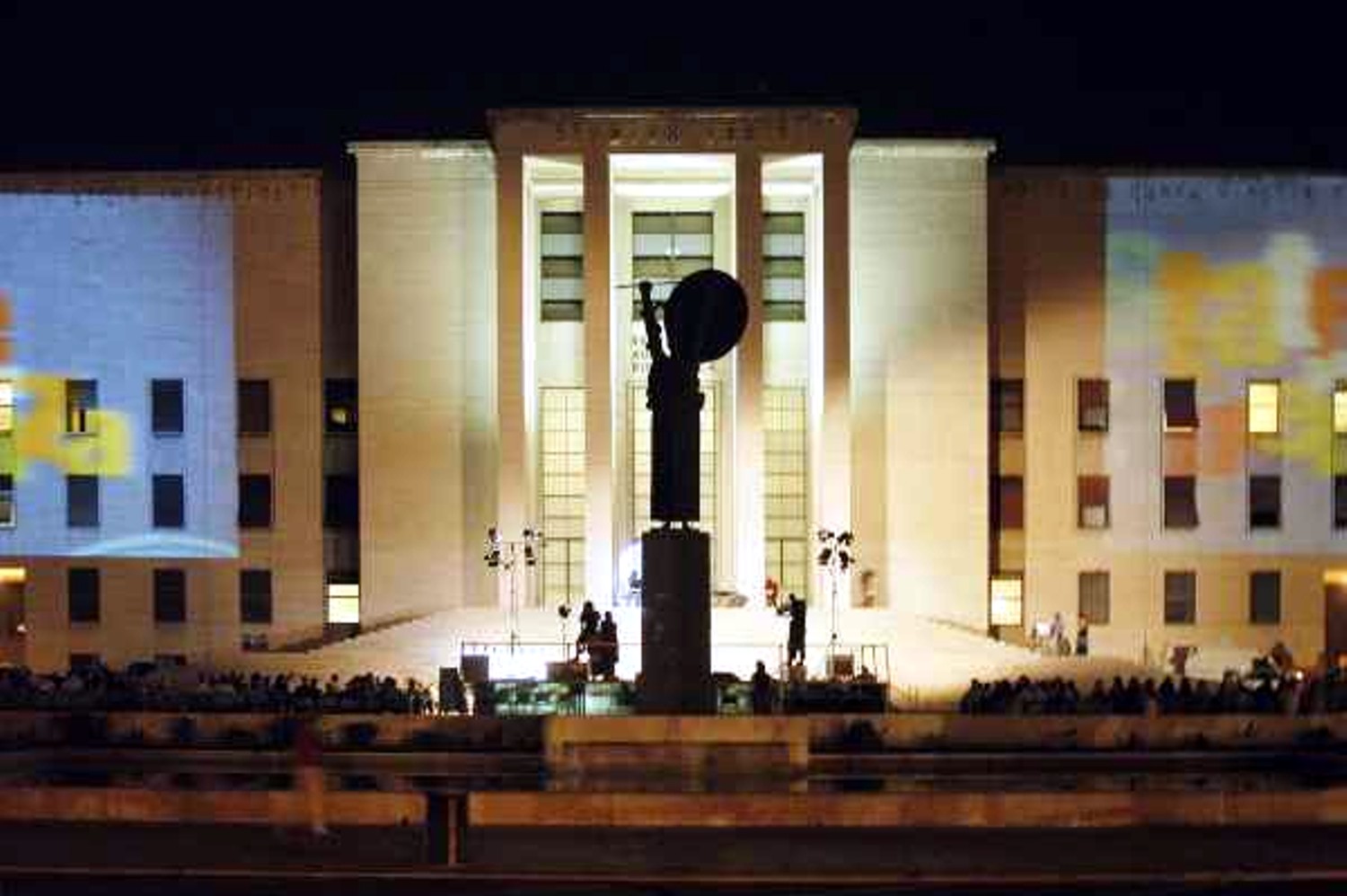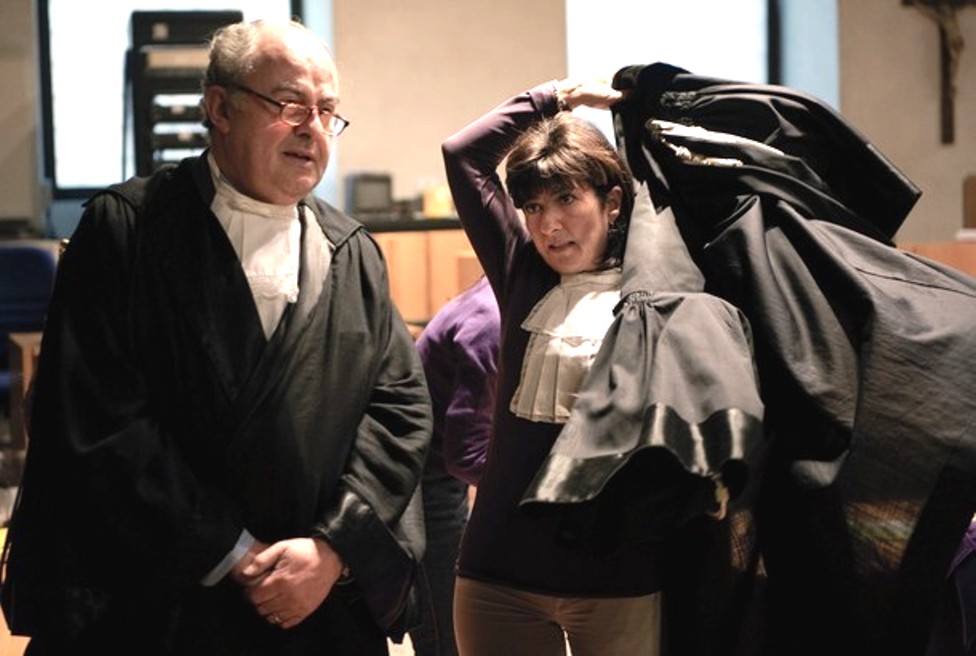
Category: Police and CSI
Thursday, October 10, 2013
Testing Of The DNA Sample Starts Today Though Possibly No Results Announced Before 6 November
Posted by Peter Quennell
1. ViaDellaPergola’s video
That video from 2010 illustrates how the existing positive tests described in the Massei Report were crystal-clear; subsequently Hellmann, Zanetti, Conti and Vecchiotti (all now being investigated) so muddied the water.
2. From our short-form Massei Report
This is from Part Three of the four-part abbreviation of the Massei Report done by Skeptical Bystander and a PMF team in mid-2011.
Exhibit 36: The double DNA Knife
Exhibit 36 is a 31 cm long knife with a 17 cm blade and a dark handle. It was seized from the kitchen cutlery drawer at Raffaele Sollecito’s home, located at 110 Corso Garibaldi in Perugia, on 6 November, 2007 when Chief Inspector Armando Finzi was ordered to perform a search of Sollecito’s residence. This exhibit is important because “Sample 36b” taken from a scratch on the knife blade yielded Meredith Kercher’s biological profile.
After putting on gloves and shoe coverings, Finzi and his team entered the home. They noted a strong smell of bleach. Opening the cutlery drawer, they saw a big, “extremely clean” knife. In Sollecito’s bedroom they found a second knife. The knives were bagged and sealed.[106]
Exhibit 36 was carried back to the police station, where it was placed in a box for shipping to the Polizia Scientifica in Rome. Dr. Stefanoni was the recipient of the box containing the knife in Rome. All parties testified that standard procedures were followed to avoid the risk of contamination.
On 4 November, 2007, Meredith’s roommates Filomena Romanelli, Laura Mezzetti, and Amanda Knox had been taken by the police to look at the knives in their kitchen at the apartment in Via della Pergola. Personnel from the Questura reported Amanda’s “severe and intense emotional crisis, unlike [the reaction of] the other two girls”.[292] This behavior was contrasted to Amanda’s behavior at Police headquarters two days earlier:
“This circumstance appears significant both in its own right and also when one considers that Amanda had never previously shown signs of any particular distress and emotional involvement (in the Police headquarters, on the afternoon of November 2, Meredith’s English girlfriends, Robyn Carmel and Amy Frost in particular, according to their declarations, had been surprised by the behaviour of Amanda, who did not show emotions).”[292]
Investigators’ attention was alerted to the Exhibit 36 knife because of Amanda’s inconsistent behavior. Later, police overheard a jail conversation between Knox and her parents on 17 November, when Knox said, “I am very, I am very worried about this thing with the knife ... because there is a knife of Raffaele’s ...”.[292]
Exhibit 36 thus became a central piece of trial evidence. The debate would subsequently be focused on two issues: The compatibility of the knife with the large stab wound in Meredith’s neck; and the reliability of the DNA analysis.
Considering the first of these points, although the knife blade is 17 cm long, the depth of the larger wound is just 8 cm . This “discrepancy” was the basis of defense efforts to discredit the knife as a murder weapon. The compatibility of the Exhibit 36 knife and the larger of Kercher’s wounds is addressed by Professor Bacci (see p. 121 of the Massei report). Professor Norelli maintains that “it is not said that a blade is always embedded (plunged into) the target right up to the handle; the blade may also go (in) only to a certain portion of its length, and not right up to its end”.[126]
It is noted that the movements of the victim may have played a part in determining the depth of the cuts. “If I insert a centimeter of the blade into the victim and the victim suddenly moves towards me, how much of the blade will be driven inside the body surface area is absolutely unpredictable and depends on the action of both”.[129] Alternatively, the blade of the knife might have met an obstacle. The cutting action is described on p. 146 and again starting on p. 152.
Defense witness Dr. Patumi disputed the compatibility of the wounds with said knife, arguing that a blade of 17 cm length could not have caused a cut 8 cm deep; see p. 156-157. However, the Court rejected “the thesis of the incompatibility of the most serious wound and the knife Exhibit 36”, holding this thesis to be “unacceptable” .[172]
Regarding the second point ““ that of the DNA analysis ““ Dr. Stefanoni was the responsible expert at the crime lab in Rome. Although no biological traces were visible to the naked eye on the face of knife blade, Dr. Stefanoni perceived scratches - “anomalies in the metal’ - on the blade when rotating the blade under strong lighting. The streaks were:
“... visible under good lighting by changing the angle at which the light hit the blade, since obviously the blade reflects light and thus creates shadows, making imperfections visible.”[196]
Sample 36b was taken from one of these points on the blade. The genetic profile of Meredith Kercher was identified from this sample. Stefanoni presented charts to the court, showing the DNA profile: she noted “that the peaks were a bit low, but that without doubt were still within the range that is considered useful for testing a specimen (page 108). Although of a much lower quantity of DNA, the profiles were nonetheless very present and, by making a comparison with Meredith’s profile, Dr. Torricelli reported that “šwe find all the alleles, and we find them to be equal to those obtained from the swab taken, from the sample taken from the wound. Therefore in this case too, without doubt”› -she continued- “šalthough we are confronted with a sample that contains very little DNA, it nonetheless contains the DNA of only one person and is therefore comparable to Meredith’s; with regard to this knife, I would say I have no doubt in interpreting it: specimen A with Amanda’s profile and specimen B with the profile, compatible with that of Meredith.”[231-32] However, the amount of DNA was small and it was all used up in order to run a single test.
The defense objected that it was impossible to evaluate whether the actual nature of Sample 36b specimen:
“.. when we have a small amount of DNA we talk about low copy number DNA, and that when this type of DNA is present, we are indeed able to carry out our amplification and obtain a profile, but we must remember that we may have lost one of the alleles, we may have an allelic imbalance ... it becomes very difficult to distinguish from a real allele, so that when working on ... small quantities of genetic material, it is necessary to be very cautious in interpreting the results.”[237]
To this point, Dr. Stefanoni argued that it is preferable “to know to whom a biological specimen is attributable, rather than ascertaining the nature of that specimen, without attributing it to anyone.”[288]
Furthermore, it was argued by the defense that the quantity of DNA was too low to be able to perform the tests and consider the results reliable. Given a low amount of DNA, the risk of contamination is high - particularly given the very numerous number of samples being analyzed.
The court rejected the possibility of contamination because no anomalies were ever identified in the Polizia Scientifica’s analytical process. The Prosecutor pointed out that all tests had been carried out in the presence of a lawyer/consultant for the defense - who had raised no objections during the testing. The possibility of contamination during the collection of evidence was rejected based on a detailed consideration of the collection process.
Thus, the DNA from Meredith which was found on that knife cannot be traced back to any contamination occurring in the house in which it was found, or to the method of acquisition of the knife on the part of Finzi, or even to the collection and dispatch methods used by Gubbiotti. In addition, as has been said, that such contamination could have been carried out by the laboratory is also ruled out.[266]
In addition, Dr. Stefanoni testified that she did have the biological profile of the defendants, but did not employ them while interpreting the electrophoresis diagrams. Nevertheless, the Massei report judges that:
“... the main criticisms advanced by the defense concerned precisely this very small DNA quantity, and it raised the question of the reliability of the result obtained.”[288]
To this central point, Dr. Stefanoni:
“Regarding the too low quantity of DNA, Dr. Stefanoni declared, as has been seen, that even in the case of a particularly scanty amount of material, the analysis and evaluation should be performed, and she added that, if the data that emerges is absolutely readable and interpretable and the correct laboratory practice was followed, the result is reliable and there is no reason to repeat the test.
“It does not follow ... that the data is unusable and unreliable as a consequence of a lack of repetition due to a lack of further quantities of DNA. It is necessary, instead, to take account of the data that emerges from such a specimen and to check for the ““ possible ““ presence of other elements, both circumstantial and inherent to the data itself that, despite the lack of repetition of the analysis, could allow an evaluation of the reliability of the analysis and of its outcome.”[289]
The court concluded that the biological profile that resulted from the 36B DNA analysis ...
“... gave a biological profile attributable to the person who was mortally wounded with that very knife: a result, therefore, that was entirely reasonable and consistent with the event; [it was] certainly not explainable as a mere coincidence, and it must be ruled out ““according to what has already been observed in this regard - that it could have originated from contamination or from the use of a suspect-centric method.”,[290] and that
“”¦. it should therefore be affirmed that the analysis of trace 36B, which detected the presence DNA attributable to Meredith, appears to be completely reliable.”[293]
3. TJMK posts on the latest DNA science
1. Poster Fy By Night: The Hellmann-Zanetti Appeal Court’s DNA Consultancy Looks Even Worse In Face Of The Latest Science
2. The Machine A New DNA Analysis Strongly Implicating Sollecito Seems to Have The Defense Forces Extremely Rattled
4. Sollecito tries to wind back the “pricked” claim
Our lawyer SomeAlibi recently explained how.
5. Andrea Vogt posts possible scenarios.
Scroll down to UPDATE OCT. 9, 2013 An excellent weighting of the possibilities.
The DNA could be Meredith’s, which would dramatically hurt thr defenses. It could be Rudy Guede’s, which would dramatically hurt thr defenses. Or it could be neither (or untestable) which would nt neccessarily affect the outcome. .
Friday, June 28, 2013
Updating Our Scenarios And Timelines #2: An Integrated Comparison Of The Timing of the Phone-Events
Posted by Cardiol MD
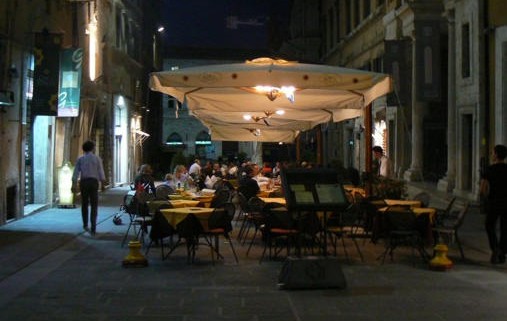
[Above and below: what Meredith missed, outside dining in Perugia at night]
1. Point of our series
TMJK’s core focus has long been upon “What happened at 7 Via della Pergola, in Perugia, on the night of November 1-2, 2007?”
Over the last 4+ years, more than 20 TJMK posts, with more than 400 comments, have addressed the subject of possible scenarios and timelines for those events. They represent a lot of thought and many are worth reading if you haven’t come across them before.
This post is the second in a series that will reappraise the more probable speculations, using the current state of our information. The first post was four weeks ago.
Reader comments in response to Part 1 amply reflect readers’ interest in exploring the various “˜open Questions’ referred-to, and how efforts to make Knox and Sollecito confront the true answers are obfuscated by their falsehoods.
The Truth of the actions of Knox and Sollecito on November 1st & 2nd, 2007, is so precious to them that they attend that Truth with a “˜Bodyguard of Lies’, to borrow Winston Churchill’s famous WW11 dictum. They even further obfuscate the answers to our questions by selectively employing a Bodyguard of Actual Truths.
The aim of their broken drain-pipe under the sink story (see previous post) was to persuade investigators, and everyone else:
1. That there was a broken drain-pipe under the sink (Massei Translation p.67), and
2. That the alleged water-leak occurred BEFORE the murder.
Their obfuscations include:
1. The omission of references to incriminating truths, e.g. omission of references to the hammer-toe on RS’s right-foot, one of his most incriminating physical attributes (see representative image of a right-foot hammer-toe below), and
2. The inclusion of “Half” truths, and
3. The inclusion of references to non-incriminating truths.
2. Integrated timing of phone events
This post is an integrated comparison of the timing of the phone-events byy coordinated universal time, merging Massei’s sections on Amanda Knox [AKP], and Meredith Kercher [MKP], as well as that of Rafaelle Sollecito [RSP].
[For the day of 31.10.07 it was shown that Meredith’s mobile phone with service provider Vodafone 348-4673711 sent an SMS at 18:27:50 hours using the cell at Piazza Lupattelli sector 7. (this signal is received in Via della Pergola 7.)
The same number received an SMS at 18:29:05 hours (this exchange of messages took place with the number 388-8921724) connecting to the same cell.
[RSP]: − on 31.10.07 Raffaele received *a call+ from the father’s fixed line (No. 080-3958602) at 22:14 for 44 seconds.
With respect to Sollecito’s mobile phone 340-3574303, attention was paid to the entire day of 1.11.07 with the following results]
Which help establish a less-suspicious baseline for comparison with later, more-suspicious results.
[RSP]− 00:00:39 an outgoing call, just after midnight
The phone traffic with regard to the day of 1.11.07 was reconstructed in the following terms (cfr. statement of Assistant Stefano Sisani at the hearing of 20.3.09).
AKP− 00:41:49 hours: outgoing phone call of 20 seconds, to a number whose holder was not identified
RSP− on 1.11.07 *he+ called the father’s house at 00:02:41 for 262 seconds
AKP− 00:57:20: Amanda’s mobile phone sent an SMS, using the cell on Via dell’Aquila 5-Torre dell’Acquedotto sector 3 (which does not provide coverage to Sollecito’s house, since it pertains to Via Ulisse Rocchi, Piazza Cavallotti, etc. and therefore at the heart of Perugia’s historic center). This consisted of the SMS which the young woman exchanged with Raffaele at the end of the Halloween evening to arrange meeting up with her boyfriend and be accompanied home
RSP− 00:57 an incoming SMS 319
AKP− 1:04:58: Amanda’s mobile phone received *a call+ for 53 seconds from the number 075/9660789, located in Piazza Danti 26
RSP− 14:25 an incoming call which lasted 58 seconds
RSP− 16:50 an incoming call, coming from the mobile phone of the father, lasting 214 sec.
RSP− 16:56 another call from the father (64 sec.)
AKP− 20:18:12: Amanda receives the SMS sent to her by Patrick Lumumba, which let her off from having to go to work at the “šLe Chic”› pub on the evening of 1 November. At the time of reception the phone connected to the cell on Via dell’Aquila 5-Torre dell’Acquedotto sector 3, whose signal does not reach Raffaele Sollecito’s house. The young woman was therefore far [i.e. absent] from Corso Garibaldi 30 when the SMS reached her, as she was walking in an area which was shown to be served by the Via dell’Aquila 5-Torre dell’Acquedotto sector 3 cell. This point of her route could correspond to Via U. Rocchi, to Piazza Cavallotti, to Piazza IV Novembre, bearing in mind that Lumumba’s pub is located in Via Alessi, and that Amanda Knox would have had to travel along the above-mentioned roads and the piazza in order to reach the pub
AKP− 20.35.48 Amanda sent an SMS in reply to Patrick, at No. 338-7195723; the message was sent when the young woman’s mobile phone was in Corso Garibaldi 30 or in the immediate neighbourhood. The cell used, in fact, was that of Via Berardi sector 7 − no other [use] was shown for the day of 1.11.07, noting that Amanda declared during hearings that she had switched her mobile phone off once she had returned 323 to Raffaele’s house, since she was more than happy she did not have to go to work and could spend the evening with her boyfriend.]
Knox may also have been LESS than happy that Lumumba preferred Meredith instead of Knox as an employee. This was humiliating-enough to Knox for Knox to decide that the time to cut Meredith down-to-size was now.
[RSP− 20:42:56 call from the father (221 seconds: this is the conversation which Dr. F. Sollecito referred to, made at the end of the film he had just seen in the cinema, which the father recommended to the son, at which point [it is said that] Raffaele informed his father of a problem with a broken drain-pipe under the sink in the kitchen”. ]
Massei Translation page 25: On “the evening of November 1, 2007 at around 10:00 pm, someone called and warned Elisabetta Lana not to use the toilet of her dwelling because it contained a bomb which could explode. Mrs. Lana immediately notified the police of this phone call; and they came to the house but did not find anything. Mrs. Lana and her husband were nonetheless asked to go to the Postal Police the next day to report said telephone call.”
MKP ““ 20:56 hours on 1 November 07, attempted call to Meredith’s mother’s home in England.
MKP ““ 21:58 hours on 1 November 07, attempted call to mobile phone’s answering service, voicemail “˜901’.
MKP ““ 22:00 hours on 1 November 07, dial to Meredith’s London bank “˜ABBEY’.
MKP ““ 22:13:29 hours (9 seconds) on 1 November 07, attempted internet connection. Connection consistent with being attempted from cottage, but inconsistent with being attempted from Mrs.Lana’s.]
Massei Translation, page 331, attributes the above 4 dialings to Meredith absent-mindedly playing with the mobile phone in her hand, and her phone may well have still been in her hand when her attackers surprised her.
Question: Was Meredith’s Phone still in the cottage at Via della Pergola at 22:13:29 hours on 1 November 07? Yes.
At about 22:30 hours Car broken-down nearby. Tow-Truck called-for.
At about 23:00 hours Tow-Truck arrives to load car.
At about 23:13 hours Tow-Truck leaves with loaded car.
[RSP- 23:41:11 RS’s father attempts phone-call but makes no oral contact. Father leaves message which is not received until 06:02:59 on 2.11.07.]
This 23:41:11 call was attempted during the very time-frame of the attack on Meredith, her murder, and the flight of her killers with her mobile telephones. Meredith’s Phone[s] were removed from her cottage by about Midnight, less than 20 minutes after this attempted call.
With regard to the day of 2.11.07:
[for 2.11.07 the first record is that of MKP - [0]0:10: 31, “when it has been established as an incontrovertible fact that Meredith’s English mobile phone was no longer in Via della Pergola, the mobile phone having received the contact under the coverage from Wind signal [cell] ..25622, which is incompatible with the cottage.”]
Question: Was Meredith’s Phone still in the cottage at Via della Pergola at 00:10: 31, 2.11.07? No!
Therefore Meredith’s English mobile phone had been removed from her cottage between 10.13.39 p.m. on 1.11.07 (more likely 11.13 p.m. when tow-truck departed) and 0:10:31 on 2:11:07; about 10 ½ minutes after midnight ““ say Meredith’s Phone[s] Removed By About Midnight, allowing for the time-elapse before being dumped near Mrs. Lana’s place. (Hellmann obfuscated this time-span on page 14 of his report, implying it to be more than 10 hours after midnight rather than about 10 ½ minutes after midnight.)
At some time before Meredith’s attackers fled, they had seized her mobile telephones, probably near the beginning of the attack, having started their attack with a pre-emptive strike to intimidate Meredith, remove all hope, surround her, display knives, seal all possible escape-routes, and remove any possibility of phone-calling for help.
Immediately after Meredith’s scream her attackers had silenced her with the fatal stabbing, and then fled immediately.
They fled with her already-seized but still switched-on mobile telephones, probably without locking anything, including Meredith’s door.
Their over-riding and 1st imperative was not-to-be-caught-at-the-crime-scene.
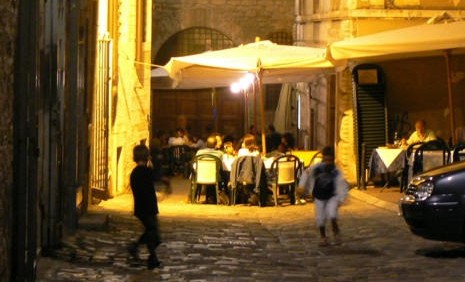
Having abruptly fled the crime-scene their 2nd imperative was not-to-be-caught-in-possession-of-Meredith’s-telephones.
Avoid Police!
Just seeing police could panic the killers into instant dumping of the telephones, without even needing to know why the police were where the police were (There is no need to invoke any awareness by the phone-dumper[s] of the reason the Police were near Mrs. Lana’s place - the hoax-call.). So if the killers saw flashing police-lights, or any other sign of police near Mrs. Lana’s place, that sign could be enough to explain panic phone-dumping - then and there (not considering whether the phones were switched-on or switched-off).
In “Darkness Descending” page 13, it states:
Mrs. Lana’s backyard overlooks a steep slope that falls sharply into the valley below. It is heavily overgrown with trees and bushes, an ideal place to dispose of evidence. If the phones had fallen just a few yards further, they would certainly have gone over the edge of the cliff, down into a 50m gully, straight into a thick scrub of nettles, and probably been lost forever”¦.
In “Death in Perugia” Follain states (Book page 62; Kindle Locations 343-6), apparently as his opinion re Lana’s daughter finding Meredith’s English phone: “It was hidden in some bushes, and she would never have found it if it hadn’t started ringing.”,
Having accomplished this 2nd imperative, Meredith’s killers paused to attend to their 3rd imperative: re-model the crime-scene, minimising the evidences of their identities, cleaning-up the evidences that it was “˜an inside job’, and simulating the appearances that it was “˜an outside job’.
One should bear in mind that these killers should have still been overwhelmed by their having actually committed a crime beyond their wildest imaginings.
Their panic impaired their thinking, and their ignorance, immaturity, inexperience, lack of technical resources and their arrogance precluded their selecting deceptions more effective against knowledgeable, experienced professional crime-investigators with a large fund of resources. They probably think that throwing the stone from inside Filomena’s room was a brilliant deception.
They wish it had never happened.
They wish they could make it unhappen (Hellmann/Zanetti got close to fulfilling this wish, but got themselves unhappened by Cassation)
They wish they could prevent the discovery of Meredith’s murder.
They cannot prevent the discovery of Meredith’s murder.
They may be able to postpone its discovery, but not longer than the inevitable return of the cottage-mates, later that day.
They believe that the person who “˜discovers’ a murder may become 1st-suspect.
They may be able to manouevre others-than-themselves into being the ones that make the discovery ““ quite a wily aim.
It is beyond reasonable doubt that
1. Meredith’s killers seized her mobile telephones, and that
2. Her killers did not switch-off these mobile telephones, and that.
3. Her killers threw the telephones into an apparent ravine, landing in Mrs.Lana’s garden, and that
4. This phone-dump was accomplished before 00:10: 31, 2.11.07, and that
5. Amanda Knox caused:
- i. the English phone to ring at 12:07:12 (16 seconds) and be discovered by Mrs.Lana’s daughter only because it rang , and
ii. the other phone, registered to Filomena Romanelli, to ring, very briefly, at 12:11:02 (3 seconds) and,
iii. the English phone to ring again, also very briefly, at 12:11:54 (4 seconds), after being brought into Mrs.Lana’s house.
6. Sollecito had more than 5 days, from about 11.30 pm on November 1st, 2007 until November 6, 2007, to remove from the killing-knife the traces of Meredith’s DNA.
In the opinion of the Court of Assizes (Massei Translation p.325), Amanda Knox’s call to Meredith’s phone was
...the first indispensible step before putting the [348] planned staging into action. The lack of a reply, since the poor girl was obviously already dead, gave a reason for reassurance about the fact that the young woman’s phone had not somehow been retrieved, [and] was therefore safe in the spot where it had been thrown, which, according to the expectations [in the minds] of the murderers was a precipice or some other inaccessible spot, rather than in the garden of a villa located barely outside the city, where the vegetation concealed it from view.
A plausible alternative opinion is that Knox’s calls to the obviously already dead Meredith were an obfuscatory stab to simulate what Knox imagined an innocent person would do.
Knox may well have expected that she was safe from phone-discovery, but these calls turned out to be the very instrument of a phone-discovery.
Had Knox not made these obfuscatory stabs, in the time-frame she made them Meredith’s phone would not have rung when it did ring and would therefore not have been discovered by Mrs, Lana’s daughter when she did discover it.
For the day of 2.11.07, when Meredith was already dead, the traffic registered for the Vodafone number was shown to be the following:
[MKS ““ 00:10:31; duration and caller unspecified, but Wind signal [cell] incompatible with cottage, but compatible with Mrs. Lana’s place.
Therefore, Meredith’s mobile cell-phone had already been taken away from the cottage by her killers. It is not possible to determine from this phone-record whether the phone was switched on or off, but this phone was discovered at Mrs. Lana’s place because it was ringing, and therefore was “on”.
MKS− 12:11:02 (duration of 3 seconds): Amanda’s phone call reached the phone and was diverted to the answering service. The Vodafone cell used by Meredith’s service provider was situated in Strada Vicinale S. Maria della Collina sector 1.
AKP− 12:11:54 (4 seconds): another call is made towards Meredith’s English mobile phone number (the cell used is the one in Via dell’Aquila 5-Torre dell’Acquedotto sector 3, thus compatible with Sollecito’s house)
RSP− 06:02:59 Raffaele Sollecito received the SMS from his father wishing
Raffaelle a good night; from the evidence of the mobile phone record printouts of Dr. Francesco Sollecito, it was shown that the sending of the message occurred at, as has been said, 23:41:11 of 1.11.07. This was the last SMS sent from that mobile phone during the whole day of 1.11.07]
3+ Hours after receiving his father’s message from 23:41:11 of 1.11.07:
[RSP− 09:24 Raffaele Sollecito received a phone call from his father lasting 248 seconds]
At this time RS’s consiousness would be dominated by his guilty knowledge, and probably far-advanced in the accomplishment of the 3rd imperative.
Did RS and father spend 4+ minutes discussing the weather?
This is the first father/son opportunity to formulate the two-pronged water-leak story.
Although AK had already been to the hardware store 2 hours before, they may well not have known the potential DNA problems with the knife, the need to scrub it vigorously, to clean-out, and repair the drain-pipes under the sink, and the need to return the knife to RS’s kitchen drawer.
As it turned-out, Sollecito had more than 5 days, from about 11.30 pm on November 1st, 2007 until November 6, 2007, to remove from the killing-knife the traces of Meredith’s DNA.
They probably did not know that incriminating stains could be invisible, but can be revealed byLuminol.
RSP− 09:29 another call was received lasting 38 seconds
RSP− 09:30 (duration unspecified?) the father called Raffaele; the call connected to the Vial Belardi sector 7 cell.(the best server cell for Corso Garibaldi 30).]
These two calls were probably spent dotting “˜i’s, crossing “˜t’s, and exchanging options, such as enlisting sister Vanessa’s skills and contacts.
Another 2+ Hours later:
[AKP− 12:07:12 (duration of 16 seconds) Amanda calls the English phone number 00447841131571 belonging to Meredith Kercher. The mobile phone connects to the cell at [346] Via dell’Aquila 5-Torre dell’Acquedotto sector 9 (the signal from this cell is picked up at Sollecito’s house)
AKP− 12.08.44 (lasted 68 seconds) Amanda calls Romanelli Filomena on number 347-1073006; the mobile phone connects to the Via dell’Aquila 5-Torre dell’Acquedotto sector 3 cell (which covers Sollecito’s house)
Discovery will be inevitable when Filomena eventuallyarrives-back at the cottage.
AK/RS have accepted that they have to “˜stand-pat’ with their efforts so-far to accomplish their 3rd imperative.
Amanda did not say a word in this phone-call to Filomena about Amanda’s phone call to Meredith, thereby withholding information that should have led Amanda to initiate discovery of Meredith’s body, and help Amanda to manouevre someone other than Amanda into being the one who “˜discovers’ Meredith’s body.
AKP− 12:11:02 (3 seconds) the Vodafone number 348-4673711 belonging to Meredith (this is the one [i.e. SIM card] registered to Romanelli Filomena) is called and its answering service is activated (cell used: Via dell’Aquila 5-Torre dell’Acquedotto sector3)
MKS: For the day of 2.11.07, when Meredith was already dead, the traffic registered for the Vodafone number was shown to be the following:
− 12:11:02 (duration of 3 seconds): Amanda’s phone call reached the phone and was diverted to the answering service. The Vodafone cell used by Meredith’s service provider was situated in Strada Vicinale S. Maria della Collina sector 1.
AKP− 12:11:54 (4 seconds): another call is made towards Meredith’s English mobile phone number (the cell used is the one in Via dell’Aquila 5-Torre dell’Acquedotto sector 3, thus compatible with Sollecito’s house)
AKP− 12:12:35 (lasting 36 seconds) Romanelli Filomena calls Amanda Knox (No. 348-4673590); Amanda receives the call connecting to the cell on Via dell’Aquila 5-Torre dell’Acquedotto sector 3 (still at Raffaele’s house)
AKP− 12:20:44 (lasting 65 seconds) Romanelli F. calls Amanda, who receives the call connecting to the cell in Via dell’Aquila 5-Torre dell’Acquedotto sector 9 (good for Corso Garibaldi 30)
AKP− 12:34:56 (48 seconds): Filomena calls Amanda who receives it from the cottage on Via della Pergola 7 (the cell used is that on Piazza Lupattelli sector 7. As mentioned, Raffaele also used the same cell when he called the service centre at 12:35 hours to recharge [the credit of] his mobile phone)
RSP− 12:35: Raffaele’s mobile phone contacted a service centre for a phone [credit] recharge (the cell used was that of Piazza Lupattelli sector 7, which gives coverage to the little house on Via della Pergola 7. The signal in question does not reach Corso Garibaldi 30, which instead is served by the signal from Piazza Lupattelli sector 8)
RSP− 12:38: Vodafone sent a message of confirmation of phone [credit] recharge (Piazza Lupattelli sector 7 cell, good for Via della Pergola 7)
RSP− 12:40: incoming call from the father’s mobile phone (lasting 67 seconds; connection through Piazza Lupattelli sector 7 cell, compatible with the Sollecito’s presence near the little house)]
Do RS and father exchange caveats?
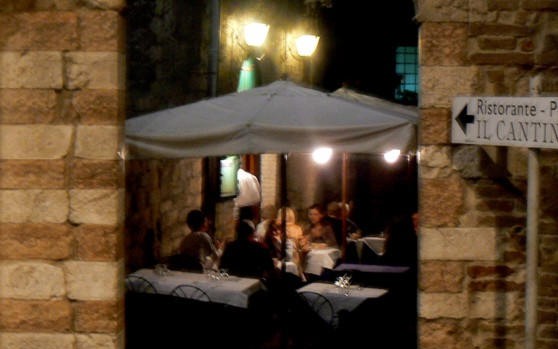
[AKP− 12:47:23 (duration of 88 seconds): Amanda calls the American (USA) number 00120069326457, using the cell on Piazza Lupatetlli sector 7; the phone call takes place prior to the one which, at 12.51.40, Raffaele Sollecito will make to “š112”›, connecting to the cell on Via dell’Aquila 5-Torre dell’Acquedotto sector 1, which gives coverage to Via della Pergola 7]
In “Waiting To Be Heard” Knox can hardly deny having made this 1st call, acknowledges making the call, and purports, now, to recall its substance, providing the reader with her version of what was said.
[AKP− 13:24:18 (duration of 162 seconds): Amanda calls the same American number which corresponds to the home of her mother, Mrs Edda Mellas, using the same cell. It is obvious that the young woman is inside the cottage, where by this point, several minutes earlier, the Postal Police had shown up, [347] represented by Inspector Battistelli and Assistant Marzi, who were engaged in the task of tracking down Filomena Romanelli, who was the owner of the Vodafone phonecard contained in the mobile phone found earlier in the garden of the villa on Via Sperandio]
In “Waiting To Be Heard” Knox can hardly deny having made this 2nd call either, she acknowledges making the call, and provides the reader with her current version of what was said.
[RSP− 12:50:34 outgoing call directed at mobile phone 347-1323774 belonging to Vanessa Sollecito, sister of the defendant; duration 39 seconds. Connection to Piazza Lupattelli sector 7 cell 320
RSP− 12:51:40 Raffaele Sollecito called “š112”› to inform the Carabinieri of the presumed theft in Romanelli’s room (duration 169 seconds; connection to Via dell’Aquila 5-Torre dell’Acquedotto sector 1 cell, which covers Via della Pergola 7)
RSP− 12:54: a second call by Raffaele to “š112”› (57 sec.; connection to Piazza Lupattelli sector 7 cell)
MKS− 13:17:10 (lasting 1 second): the cell used was located in the same place, sector 7
AKP− 13:27:32 (duration of 26 seconds): Amanda calls the American number 0012069319350, still using the cell at Piazza Lupattelli sector 7.
AKP− 13:29:00 (duration of 296 seconds) Amanda receives [a call] from No. 075/54247561 (Piazza Lupattelli sector 7 cell)
RSP− 13:40:12: incoming call from the father (94 sec.; Via dell’Aquila 5-Torre dell’Acquedotto sector 1 cell)]
AKP− ?13:48:33 (1 second): this is an attempted call to her mother’s number
““ see below at 13:58:33
AKP− 13:58:33 (1 second): this is an attempted call to her mother’s number
The above item is a faithful translation from the Massei Motivazione section on Amanda Knox’s mobile phone traffic, but is listed out-of-time-sequence; the assigned-time is probably a “˜typo’ ““ “13:48:33” is much more likely correct.
[RSP− 14:33: the father called for 21 seconds (as above)]
Do RS and father exchange more caveats?
[AKP− 14:46:14 (102 seconds) Amanda receives a call from the German number 494154794034, most likely belonging to her aunt Doroty Craft
MKS− 15:13:43 (5 seconds) cell not indicated.
AKP− 15:31:51 (1 second): Amanda receives an SMS sent from the number 389/1531078; at this point the cell being used is the one on Via Cappuccinelli 5/A sector 2, where the Questura [police headquarters] is located
In the hours that followed the [mobile phone record] printouts show that the answering service of Amanda’s number 348-4673590 was activated due to a lack of signal coverage.]
Massei Translation p.324:
Finally, the analyses of the [phone record] printouts highlight that the first phone call made by Amanda on the day of 2 November was to Meredith Kercher’s English number.
The American student called her English flatmate even before contacting Romanelli Filomena to whom she intended to express, as she testified in court, her fears about the strange things she had seen in the cottage, which she had returned to at about 11 o’clock in order to shower in preparation for the excursion to Gubbio which she and Raffaele had planned.
It is strange that Amanda did not say a word to Filomena about the phone call to their flatmate, when the call, not having been answered, would normally have caused anxiety and posed some questions as to why Meredith did not answer the phone at such an advanced hour of the day.
[RSP− 17:01: the father called for 164 seconds; cell used is that of Via Cappucinelli 5/A sector 2, corresponding to the location of the Perugia Police Station
RSP− 17:42: the father called for 97 seconds (as above).
With regard to Raffaele Sollecito’s landline home phone (No. 075-9660789)
The above 2 calls presumably covered final agreements on the Father/son stories.
For the entire day of 1 November and then of 2 November, Raffaele Sollecito’s fixed line was not affected by any calls, either incoming or outgoing.]
This finishes the merged listings of the Massei sections on AKP, MKP, and RSP, using the UPC telephone traffic, reappraising the more probable scenarios surrounding what happened at 7 Via della Pergola, in Perugia on the night of November 1-2, 2007.
Readers are invited to make their own suggestions on probable scenarios, here below or in email.
Monday, February 18, 2013
Raffaele Sollecito Now Under Formal Investigation For New Crimes Apparently Unprecedented
Posted by Our Main Posters
Breaking news. The Chief Prosecutor for Tuscany Dr Quattrocchi (above and below) has taken this investigation of Sollecito behind the scenes. Dr Quattrocchi is actually under no compulsion to make any of the Perugia and Rome complaints public before his investigation is complete. He has ordered all documents removed from the public domain. This is specifically to give the defense and their PR no advantage, and to make sure those others in Perugia who are going to complain about being defamed do so without harm.
Overview
This is a contempt of court case as court officials have been impugned. This is Wikipedia’s definition of “contempt of court” under US and UK common law.
Contempt of court is a court order which in the context of a court trial or hearing, declares a person or organization to have disobeyed or been disrespectful of the court’s authority.
Often referred to simply as “contempt,” such as a person “held in contempt,” it is the judge’s strongest power to impose sanctions for acts which disrupt the court’s normal process.
A finding of contempt of court may result from a failure to obey a lawful order of a court, showing disrespect for the judge, disruption of the proceedings through poor behaviour, or publication of material deemed likely to jeopardize a fair trial.
A judge may impose sanctions such as a fine or jail for someone found guilty of contempt of court.
We may now find out much more about the equivalent under Italian law.
When Raffaele Sollecito and Amanda Knox were released at the end of 2011, the prosecution filed a Supreme Court appeal within the allotted period. This automatically meant that Sollecito and Knox still stood accused of crimes until the Supreme Court finally signs off.
Typically Italian defendants in such a legal status get good legal advice, on the lines of “Shut up and keep your heads down. We need to be the only ones doing the talking here.”
Here such advice may or may not have been forthcoming, but the public record strongly suggests it was not. In fact Sollecios entire legal team is credited by both himelf and his shadow writer Andrew Gumbel with helping. This is what Gumbel wrote in his Acknowledgments:
Donatella Donati in Luca Maori’s office gave up many hours to make the official documentation available and to present it all in a cogent order. She’s a largely unsung hero in this story and deserves recognition for her extraordinary efforts on Raffaele’s behalf. Giulia Bongiorno, Luca Maori, and Tiziano Tedeschi answered questions and made comments on parts of the manuscript.
In the same Acknowledgments Sollecito credits the following.
I was lucky to have a crack legal team who showed their devotion to the truth and, in some cases, did not even request payment. The team of lawyers and consultants included Adriano Tagliabracci, Francesco Vinci, Bruno Pellero, Francesco Introna, Giulia Bongiorno, Maurizio Parisi, Daniela Rocchi, Luca Maori, Donatella Donati, Marco Brusco, Aldo Poggioni, Delfo Berretti, Tiziano Tedeschi, and Antonio D’Ambrosio.
Interestingly, Luca Maori has already left Sollecio’s legal team, and all eyes are now on Giulia Bongiorno. Buy plenty of popcorn. Lawsuits could fly between lawyers and family.
Since the end of 2011 Curt Knox’s forces seem to have have gone full steam ahead with their own vilifications of the Italian prosecutors, police, judges, and witnesses - in fact almost anyone who had any role in 2009 in finding them guilty, or came to believe that was a fair finding. Ourselves included.
In late 2012 Curt Knox apparently invited all the most fervent of these attackers to Seattle, including Frank Sforza and Bruce Fischer, as some sort of reward for their legally very ill-advised campaign. Buy plenty more popcorn. Lawsuits could fly here as well.
Raffele Sollecito’s forces in Italy had been a lot more restrained.
But at a stroke, the shrillness of Raffaele Sollecito leapfrogged that of Amanda Knox’s forces, with the publication of his book Honor Bound by Simon and Schuster in English in the UK and US last September,
INSTANTLY the book became notorious in Italy, because excerpts were read out by an Italian reporter in New York on the national television show Porta a Porta. Raffele Sollecito’s father Francesco was on that show, and he was increasingly forced to admit a key claim in the book was invented. It simply never happened. His son made it up.
The false claim by his son that Francesco was made to repudiate - it reappears over many pages - concerned a claimed deal engineered by his family and offered by the prosecution to Sollecito.
The deal he claimed was to roll over on Amanda Knox, and if Sollecito did so, he would be home free.
Following the Porta a Porta show, the book (obtainable on UK Amazon, where many false claims are repeated in the reviews) began to make its rounds in Italy. It took some time before many official parties accused of crimes by Sollecito obtained copies and started to explore their own legal possibilities. They are apparently still far from finished.
At the end of last week, the Chief Prosecutor for Tuscany Giuseppe Quattrocchi received the first official request from Perugia, which is to investigate 12 very serious claims in the book against the prosecution and the legal institutions of Italy. The complaint nominates a number of witnesses.
The Prosecution office of Florence now has a maximum of six months to investigate whether there is a case against Sollecito and other named parties. If so, they will steer it through the hoops of the Italian process.
The potential ripple effects of this appear to us to stretch on and on. They could come to engulf both legal teams (credited in the book with helping) and all of the PR for both defendants. Sollecito’s publisher and shadow writer are specifically named in the complaint
If Amanda Knox is not let off the hook by the Italian Supreme Court late in March (the outcome we consider most likely, given the great strength of the appeal) the smart way for Knox to go in light of this could be to junk all her websites, her book, and her interviews, and throw her supporters under the bus. Plus maybe get smarter lawyers - the aggressive and inexperienced Dalla Vedova does her no favors.
Keeping Amanda Knox’s head out of this deadly new line of fire may be very late - but maybe better late than never.
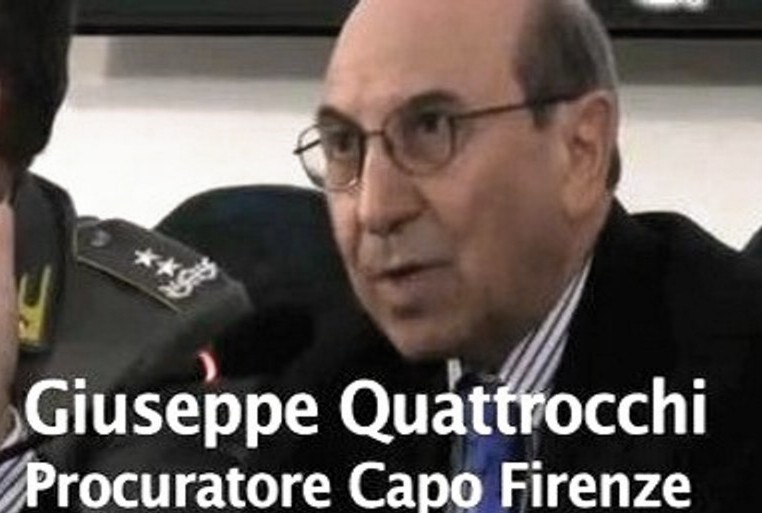
Friday, July 27, 2012
Heads-Up To The Amanda Knox Forces: A Case Showing How Closely The US and Italian FBIs Co-operate
Posted by Peter Quennell
Meet Doctor Mark Weinberger.
That report about his arrest in Italy was broadcast in 2009. We last posted on him here.
Weinberger was apparently a wildly successful doctor who ran a sinus clinic in Indiana and lived a wildly affluent lifestyle a few milers north outside Chicago. In 2004 he disappeared off his large yacht which was then anchored at a Greek marina, and for six years his (very impressive) wife Michelle presumed he was dead.
In the meantime she had found out that he had actually been running a huge fraud, scamming health insurance and the US government via false billing and unnecessary surgery (often botched) for many millions. And that far from being left comfortably off, she was financially wiped out.
In 2006 in absentia she divorced Weinberger and started over.
In 2009 Weinberger was captured in the Alps by the Italian equivalent of the FBI and returned to the United States as soon as his extradition was requested. In perhaps 99 percent of all US-Italian extradition cases, the fugitives are handed over by both governments very promptly. This sure wasn’t any exception.
Weinberger began to lose the first of numerous civil suits a year ago, and on wednesday he pleaded guilty to 22 criminal charges in federal court.
His prison term is set at ten years.
One moral of the tale apparently still not learned by Steve Moore and Bruce Fischer and their hapless ship of fools, so desperate for approbation, is this: much or most of the time it is the fine Italian equivalent of the FBI that they are misrepresenting and defaming.
In the past two weeks alone, we have seen new ramblings by Saul Kassin and Nigel Scott (engineered by Bruce Fischer) that to any informed lawyer are quite crazy. Kassin and Scott clearly didnt have the slightest idea WHO they were defaming or accusing of crimes.
Or how much more determined thier defaming makes the Italian FBI and other law enforcement agencies and the courts to give Amanda Knox (or Curt Knox or Edda Mellas) no special breaks.
The daffy Steve Moore first introduced this confusion way back here. And of course Bruce Fischer, Curt Knox’s hotheaded chief hatchet man, sustains it up to this day.
Eighteen months ago, Chris Mellas (whose business in Seattle is doing well) sensibly recommended from Perugia that the Knox campaign should finally acquire some cool heads and some REAL experts, and toss the trouble-making grand-standers they had acquired over the side.
Perhaps predictably, Curt Knox (whose business in Seattle is doing badly) reacted red-faced and steaming, and shot this seemingly quite smart idea down. So the abrasive, misleading, very amateur campaign goes on.
***
Added. We are now told that Frank Sforza and David Anderson are in Seattle, and Sollecito will be there soon, to actually jack up the level of defaming in the RS and AK “we were the victims” books being written.
Wow. THAT is Curt Knox’s end-game?l He ran that one past Chris Mellas? It seems universally believed in officialdom in Rome and Perugia that Curt Knox KNEW all along that Amanda did it. Apparently with good evidence.
What will he do if they charge him?
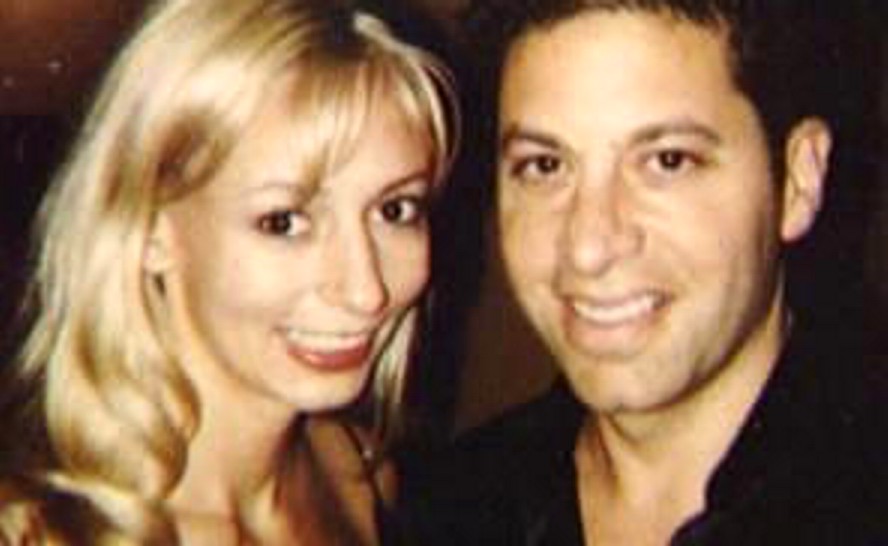
Tuesday, June 26, 2012
Italian Police Long Known As Among Europe’s Coolest, Now Also Being Remarked Upon As…
Posted by Peter Quennell
It’s tough right now for Italian cops, going up against the rioting crowds and the illegal immigrants and the three mafias. But with their sustained pressure the mafias are fading, and the riots and immigrants may dwindle soon if and when light appears at the end of the economic tunnel.
And those images are not what Italian police are best known for.
Above all else, they are cool. They officially work hard at being cool and high-profile and rather colorful, which is perhaps one reason why the Italian prison population is so very low. Their regular uniforms and their ceremonial uniforms tend to be eye-catching, and sometimes resplendent, and unless you’re Mr Berlusconi, their manner tends toward firm but agreeable, and sometimes quite funny. .
One can be doing 100 mph on an autostrada and a car will come by at 140 mph, with a police car on its tail which can exceed 200 mph. The second to last image below (above the… enough said) is of a Bugatti Veyron, which even in standard mode is powered by an engine of 1000 horsepower and has been clocked at close to 250 mph. (It also costs close to $2 million to private buyers.)
Now here is a report by John Hopper in the UK Guardian on the Italian police’s frequent warm side, and there are similar tales about the polizei on quite a few English-language and Italian blogs.
The financial crisis in Europe may have brought out the worst in certain bankers, but it seems to be bringing out the best in Italy’s police.
On Tuesday, and for the second time in less than a month, officers called to deal with a shoplifter were reported to have taken pity on the alleged thief and paid for the goods out of their own pockets.
The latest case arose when staff at a supermarket on the outskirts of Siena, in Tuscany, alerted police to a suspected robbery. The officers found a 27-year-old Egyptian and his 19-year-old brother who had apparently failed to pay for goods they had removed from the shop.
The police established that the older of the two was unemployed and had a wife and two children. Along with some pasta, he and his brother were found to have taken only milk, nappies and baby food. At this point, according to Corriere Fiorentino, the officers opened their wallets and paid the bill.
A similar gesture prompted a round of applause from shoppers at a supermarket in Milan after a 76-year-old pensioner, identified only as Angela, was found to have passed through the checkout without paying for a box of Tic Tac sweets worth 60p.
Sergeant Arturo Scungio said he and his patrol partner had caught up with the suspect near the shop. “She was trembling like a leaf and was clearly frightened by the uniform. From the way she was dressed, I realised she was not well off, that she was one of those who have difficulty making it to the end of the month. I told her what the law was and then I asked her how much pension she received.”
The old lady said that she was on €320 (£255) a month, adding: “I’ve always paid my taxes.” Scungio said that by the time they returned to the supermarket checkout, she was in tears.
The manager told them he did not intend to press charges. “I opened my wallet and paid the 78 cents owed for the Tic Tacs,” Scungio said.
Those humorless sad sacks who have attached themselves to Amanda Knox like leeches… Pity they’re so blinded to Italy’s rather cool reality.
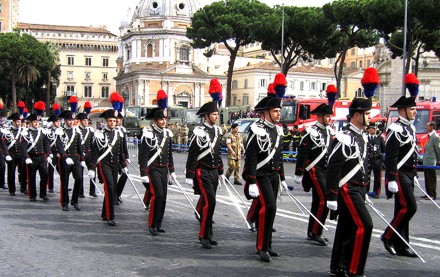
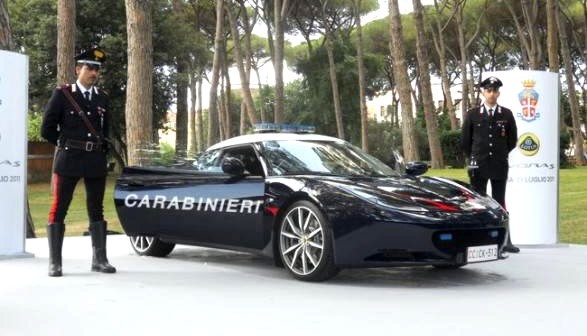
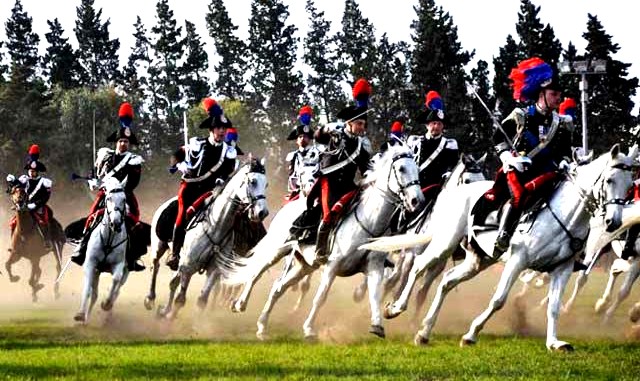

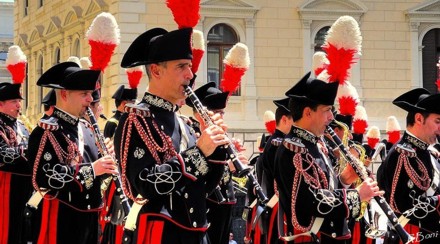
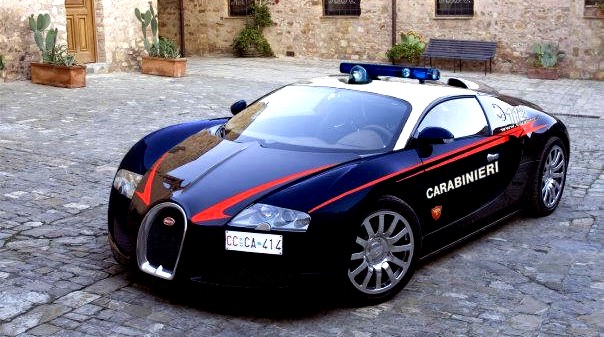
Wednesday, May 09, 2012
Considering The Sad And Sensitive But Also Crucial Subject Of Meredith’s Time Of Death
Posted by James Raper
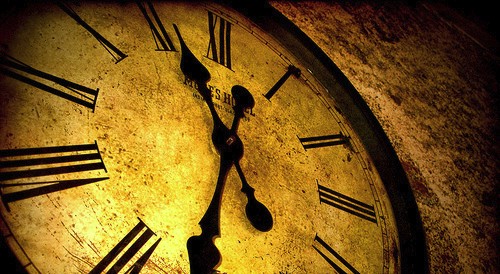
The following is a discourse on the time of death (TOD) arguments in the case.
These have been summarised but not analysed in depth yet on TJMK. A discussion on the pathology is not really everyone’s cup of tea, but the issue was examined in some detail by Massei and to some extent by Hellmann with somewhat differing conclusions reached.
The topic is relevant because Judge Massei used (inter alia) the expert’s findings to corroborate a TOD being after 11pm, more toward 11.30pm, whereas Judge Hellmann argued an earlier TOD as follows: “it is more consistent”¦.to hypothesize that in fact the attack, and hence the death shortly thereafter, occurred much earlier than the time held by the Court of first instance, certainly not later than 10.13 pm”.
In addition to what is covered by the contents of these two Motivation Reports, there is an argument which is presented by the Friends of Amanda, and in particular Chris Halkides who I understand is, or was, an Associate Professor of Chemistry and Biochemistry at the University of North Carolina. In fact he presents an argument put forward by Professor Introna (Sollecito’s expert) during the trial.
This argument is to do with the standard time for the stomach to empty from the start of a meal, and relating this to the autopsy findings and in particular that of the pathologist Dr Lalli who found that Meredith’s stomach was 500cc full but that there was no material to be found in the duodenum. Halkides’ argument is that this demonstrates conclusively that Meredith was attacked shortly after her return to the cottage at 9pm and would have died shortly thereafter. The significance of this, if correct, is apparent in that it opens up, or at least it raises a doubt as to whether there is or not a verifiable alibi for Knox and Sollecito.
Although Knox does not have an alibi from the time of Meredith’s return home at 9pm, there was human interaction, the last, on Raffaele’s computer at 9.15pm, and one might assume that they were together at that time. But no verifiable alibi until one takes into account that Curatolo says that he first saw the two on Grimana Square around 9.30pm.
My area is the law, and I have no medical or scientific expertise, so I hesitate to go up against anyone who has, but nevertheless I will endeavour to summarise and rationalise the evidence, arguments and conclusions as presented by Massei, Hellmann and Halkides.
First a word about the digestive system.
Food, already masticated, passes through the esophagus to the stomach, where it is broken down by acids, from where it then passes to the small intestine from whence the body extracts the nutrients it needs. The duodenum is that part of the small intestine right next to the stomach and it’s function is to dissolve the food “juice” further with enzymes before passing it on to the rest of the small intestine.
Judge Massei
Judge Massei considers the experts’ findings in the following areas to determine a likely time of death.
The first is temperature decrease, “taking the Henssge nomogram into account: rigor mortis; hypostatic marks” etc.
One can note that in fact rigor mortis and the hypostatic marks were not in the least bit helpful due to the 12 hour delay in the pathologist getting to examine the body.
That apart, nevertheless “¦”¦“These led Dr Lalli to conclude that death may have occurred between 21 hours 30 minutes, and 30 hours and 30 minutes, before the first measurement, and thus between approximately 8 pm on November 1st 2007, and 4am on November 2nd”¦.The intermediate value also indicated by the mathematical reconstruction (26 hours prior to the first measurement) puts the time of death at approximately 11 pm.”
Just how one works out TOD on temperature decrease indicators, especially in the absence of a pathological examination earlier than that which took place here, is pretty technical. I will not attempt to present the data (some of which is missing i.e Meredith’s actual body weight) or explain the mathematical models (so as to calculate body weight and the rate of cooling) (the Henssge nonogram appears to be one such mathematical model in graph form) that the experts used.
Nearly all the experts, other than Professor Introna, whilst having marginal disagreements about data and formulae, were not in fundamental disagreement about the wide parameters of or even Dr Lalli’s conclusion of a TOD of approximately 11pm.
Professor Introna departed from the other experts to use an “ideal weight” and a specific formula to calculate the ideal weight, to produce a TOD of 8.20pm when of course we know that Meredith was still very much alive. Thus Massei ruled out ideal weight calculations as unreliable and used a median weight based on Dr Lalli’s guesstimates of Meredith’s weight (as used by the other experts) on first examination and at autopsy, though she was not actually weighed at all.
The second area is gastric emptying of the stomach.
It was acknowledged by all the experts that there is something like a standard period between the time that food enters the stomach and it then being processed through into the small intestine. There was, however, some disagreement as to the parameters, ranging between 2-3 hours and 3-4 hours. One could therefore say 2-4 hours. Remember this.
Most of the experts agreed though that individuals are different, and there are variables leading to wide discrepancies including the type of meal eaten. A number of the experts heard said that the state of digestion was probably the most unreliable indicator as to the TOD.
All agreed that acute stress, psychological as well as physical such as an attack, would inhibit the digestive process.
I will not rehearse Professor Introna’s argument here as this, essentially, is the argument which Chris Halkides deploys, to which I will come in a moment.
It is fairly clear that Massei found the information as to body cooling time more convincing than information as to the state of digestion. However, as I understood it, the Appeal Court was going to be asked to re-evaluate precisely that. Did it?
Judge Hellmann
The Court of Assizes of first instance has acknowledged the difficulty in precisely fixing the time of death based merely on autopsy criteria. Since not all the accurate data is available, the time span within which the death of Meredith Kercher can be placed based on such criteria remains very widely outlined: between 9pm and 9.30pm of November 1st 2007, and the early hours of November 2nd.However, in reconstructing the sequence of events the Court of first instance assessed it was able to fix the time of death based on other elements, in particular the harrowing scream”¦.
The first point to note here is that Hellmann misinterprets the first Court’s findings. He ignores the fact that the first Court did determine a TOD between 11pm and 11.30 pm as probable based on the pathology alone, and gave reasons for this.
None of the expert testimony is rehearsed, let alone re-evaluated by Hellmann. He proceeds merely to discredit the reliability of the witnesses as to the other elements such as the scream etc.
One recalls that Nara Capezzali says that she heard a scream sometime between 11 and 11.30 pm. That there was a broken down car and the breakdown driver came and went between perhaps 11 and 11.15 pm.
As mentioned earlier his hypothesizing about the other elements leads him to a TOD of not later than 10.13 pm although this time seems a very random one based on what he presents. He talks in this section about Guede’s statement that he arrived at the cottage at 9 pm.
One suspects that if Hellmann could have fixed the time of death at 9.15 pm or 9.30 pm then he would have done so as either time would be a get out of jail free card for Knox and Sollecito. He did not, but he got them out of jail nevertheless with his hypothesizing - here and elsewhere in his report.
I could just stop here because further discussion on the pathology itself would seem irrelevant as regards the appeal to Cassation, though it could really matter at a second appeal trial.
But here is a comment about Chris Halkides because some do say they find his conclusion convincing.
Chris Halkides
My summary of his argument.
The stomach was full (or at least had 500 cc of contents) and the duodenum had no material in it. As the duodenum had no material in it then, Halkides deduces, the stomach had not started to release any part of the meal Meredith had consumed at Robyn Butterworths’ into the small intestine at TOD. Death stops the digestive process.
The contents of the stomach observed by Dr Lalli included some of the apple crumble eaten by Meredith and what appeared to be items, in a very advanced state of acidification, thought to be pizza toppings. Meredith and Sophie had eaten pizza at Robyn Butterworths’ home, followed by the apple crumble. In addition there was a small measure of alcohol in the stomach equivalent to a glass of beer.
They had started eating at about 6pm (some accounts e.g John Follain’s have it earlier at 5.30 pm) or maybe 6.30 pm, putting on a DVD to watch a film and finishing at 8 pm or perhaps 8.30 pm. The times here are an indication if anything and are not to be treated as completely accurate.
If it was 6.30 pm that Meredith began to eat then using the standard parameters discussed by Massei we have latest TODs of 9.30 or 10.30 pm for when material from the stomach should have started to enter the duodenum. Not later and certainly not as late as 11 or 11.30 pm.
That is Halkides’ argument in a nutshell. He argues that TOD is actually about 9.30 pm. If so it would have been impossible for Knox and Sollecito who were still at the flat at 9.15 pm and who were seen in the square at 9.30 pm to have committed the murder.
He has referred me to an article in the Journal of Gastroenterology and Hepatology about an experiment conducted on volunteers where the mean time (for 95 individuals) for gastric emptying of solids is 127 minutes, give or take, I think, twenty minutes either side.
Using the mean, to be pedantic, this would mean that Meredith died before she got home or at the latest immediately on arrival (6.30 + 2 hours 27 minutes = 8.57 pm.)
That article, incidentally, was published in 2006. It doesn’t seem to date that the results have been peer reviewed and verified and I would have thought that the experts who testified at the trial in 2009 would have been aware of it. So the data set out here may be suspect for a given individual and does not take into account variables excluding age, sex and body mass index which the research found to have no significant correlation.
In any event Halkides is quite happy to have a latest parameter of 3 hours, but no longer. Indeed that would be what brings us to 9.30 pm.
The problem I detect with his argument is twofold.
Firstly there is the uncertainty as to when Meredith began to eat at Robyn’s home (and since it was a two course meal, when she began to eat the apple crumble) and secondly Halkides’ argument is predicated on that two course meal being her last.
If the apple crumble was eaten at 8 or 8.30 pm then (adding on the 2 hours 27 minutes from the above research) it may still have been in her stomach at 10.27 or 10,57 pm, or later indeed (which Halkides has to concede) since the digestive time from the research is only an average.
So with a parameter of 3 hours we might just as well say 11 pm or 11.30 pm.
In addition to variables we could take into account inhibitors such as Meredith suffering acute psychological stress commencing”¦well”¦we cannot be certain when, can we?.
One can play Hellmann’s game and hypothesize to our advantage a number of stress situations on that fateful evening, starting quite early. No one has to accept Massei’s hypothesis of a Meredith on her own and in relaxed mode until about 11pm. Massei’s hypothesis here is in no way crucial.
Furthermore the hypothesis that Meredith actually ate a further snack on her return to the cottage does seem to have some basis in fact in that at the autopsy the pathologist found a mushroom in her esophagus. Mushrooms specifically had not been a topping on the pizzas baked at Robyn’s home. As to the alcohol in her stomach no alcohol had been consumed at Robyn’s home, only water.
It might sound a bit flippant for me to suggest it but it might be the case that Meredith, who was passionate about pizzas, had a beer and grilled a quick meal of pizza toppings from the fridge for herself which Halkides mistakes for evidence of the pizza still in the stomach.
That Meredith might still have been hungry might be because she had not, until eating at Robyn’s, eaten for a considerable time beforehand.
She had been partying all night Halloween and had gone to bed at about 4 am, rising at about midday, and then leaving not so long afterwards to be with her friends. Whether she had anything to eat at the cottage before leaving on the afternoon of the 1st, we simply don’t know.
Knox tells us in her e-mail to Seattle that she and Raffaele cooked and ate there, but she does not mention Meredith having anything to eat, and Meredith left before they did.
For some reason John Follain thinks Meredith did eat then, Paul Russell that she did not. I do not see how either could be sure. If it had been me I might have felt up to a nibble but not much more knowing that in a few hours I would be eating a meal with my friends.
It seems to me that it is quite possible that Robyn’s pizza had passed through the stomach, duodenum, and indeed perhaps most of if not the rest of the small intestine by 11.30 pm and that the apple crumble had not even begun to enter the duodenum.
Let us assume that Meredith actually started her pizza at 5.30 pm (according to Follain) finishing at 5.40 pm. As she was already hungry the stomach acids go to work straight away and the pizza passes at the earliest to the duodenum after two hours, spending a further three and half hours (as per literature) in the small intestine before passing to the rectum . A total of five and a half hours.
Thus the small intestine had disposed of it by 11.10 pm. There would however be an unlikely gap to the consumption of the apple crumble. Yet if the apple crumble was consumed after the DVD (watching the film The Notebook circa 123 minutes) then that would be around 8 pm, entering the duodenum three and a half hours later (possible) at 11.30 pm or at least it would be doing this but for the fact that Meredith was already the subject of a vicious attack inhibiting the digestive process.
I accept that I am not using uniform digestion times in this speculation (indeed I have deployed earliest and latest parameters at will) but nevertheless they are within the parameters accepted by the experts, and even, at a push, by Halkides as well.
The point is that this is a complicated topic and there are many imprecise details that do not allow for certainty but only probablilities, or in some instances, possibilities. This Massei, and to a certain extent Hellmann recognized.
Nobody can be precisely sure and so any other timeline or alibi must stand or fall on their own.
Sunday, July 24, 2011
Is the Conti-Vecchiotti DNA Review Defamatory? Stefanoni Believes So and May Sue
Posted by Peter Quennell
This looks like really bad news for Amanda Knox and Raffaelle Sollecito. The last straw.
TJMK main poster Fly By Night already described in great detail how suspect and heavily biased is the Conti-Vecchiotti report.
He predicted fireworks by the Scientific Police and prosecution expert witnesses who were seriously and without proper bases impugned. He predicted the fireworks would start tomorrow in court.
But already the fireworks have begun. The Guardian’s Tom Kington (who himself has often seemed to show a pro-Knox bias) reports quoting the UK’s Sunday paper The Observer:
A prominent forensic scientist, whose DNA evidence helped to convict the US student and her former boyfriend, has vowed to overturn the findings of an independent report that says much of her work in the case was unreliable.
Written by two independent experts from Rome’s Sapienza University, the 145-page DNA review rubbishes the work of Patrizia Stefanoni, the police forensic scientist who found Knox’s and Kercher’s DNA on a kitchen knife at Sollecito’s house and identified DNA belonging to Sollecito on a torn bra clasp found beside Kercher’s semi-naked body.
The report claims Stefanoni ignored international DNA protocols, made basic errors and gave evidence in court that was not backed up by her laboratory work, rendering the knife and bra strap worthless as evidence. But Stefanoni has vowed to fight back during three hearings devoted to the DNA reviews.
“I am angry about the false statements in this report and ready to come to court to highlight the past record of these experts,” she told the Observer. “I am also looking into taking legal action against them. What international DNA protocols are they talking about? The Italian police is a member of the European Network of Forensic Science Institutes (ENFSI), while they are not.”...
After discovering there was no DNA left to check on the knife or the bra clasp, the experts retraced the steps taken by Stefanoni, concluding that the DNA trace of Kercher on the blade was so weak it could not be reliably matched ““ or was at best the result of contamination ““ and quoted Stefanoni admitting in court she should have double-tested her result to be more convincing.
Stefanoni claimed she had no need to repeat tests since the experts for the defence were on hand to witness her work. “And it was good enough to show it was Kercher’s DNA,” she said. “A small amount, but good quality.”...
The experts quote numerous US police and FBI experts on the risk of low DNA results and poor evidence handling, prompting one Italian police source to claim they were being fed information by Knox’s defence team. (Emphasis added.)
More attempted manipulation behind the scenes that now turns out to be heavy-handed overreach? Good luck to Judge Hellman tomorrow. He appointed the two “independent experts.” And he already almost lost control of his court once.
He will already be getting anxious to protect his good name before the Supreme Court. Unlikely now to buck any trends.
Tuesday, March 22, 2011
Limited Review Of The DNA Tests Agreed To By Judge Hellmann Are Now Underway In Rome
Posted by The Machine
[Amended by the Machine after his posted comment.]
Stefano Conti and Carla Vecchiotti of La Sapienza University in Rome (above) have begun the review of the DNA on the large double-DNA knife and the bra clasp under the eyes of expert witnesses.
Dr. Patrizia Stefanoni and Professor Giuseppe Novelli will be testifying on behalf of the prosecution.
Professor Novelli has an impressive CV. He is a highly regarded professor of biomedicine at Tor Vergata in Rome and director of the Centre of Excellence for Genomic Risk Assessment in Multifactorial and Complex Diseases. Professor Novelli is regarded as the “father of police forensics” in Italy.
If there had been any doubts about the validity of the DNA evidence against Amanda Knox and Raffaele Sollecito, he wouldn’t have agreed to testify for the prosecution.
A number of independent experts have already confirmed the validity of the DNA evidence at various court hearings.
There was an independent review of the forensic evidence in 2008. Dr. Renato Biondo, the head of the DNA unit of the scientific police, reviewed Dr. Stefanoni’s investigation and the forensic findings. He testified at Rudy Guede’s fast track trial in October 2008 and confirmed that all the forensic findings were accurate and reliable.
He also praised the work of Dr. Stefanoni and her team. “We are confirming the reliability of the information collected from the scene of the crime and at the same time, the professionalism and excellence of our work.”
Alberto Intini, the head of the Italian police forensic science unit, testified for the prosecution at the trial last year. He maintained that the crime scene had not been contaminated. He pointed out that unless contamination has been proved, it does not exist.
He also stated that the results of the tests showed that the investigation had been carried out correctly because there was not even one trace of any of the forensic technicians.
The Kercher family hired their own DNA expert, Professor Francesca Torricelli, and asked her to examine the DNA evidence.
Professor Torricelli is the Director of a genetic facility at Careggi University Hospital and has been working in genetics since 1976. She testified at Knox’s and Sollecito’s trial last year and she also confirmed Dr. Stefanoni’s findings.
She told the court that the significant amount of Sollecito’s DNA on Meredith’s bra clasp meant that it was unlikely that it was left by contamination. She also agreed with Dr. Stefanoni that Meredith’s DNA was on the blade of the double DNA knife.
Distinguished DNA expert and former Caribinieri General Luciano Garofano analysed the DNA and forensic evidence for the early 2010 book “Darkness Descending”.
He has more than 32 years of forensics experience and is a member of the American Academy of Forensic Sciences. He is considered by many as Italy’s top forensics expert. In his section of the book, he explains at length why he too thinks that Knox and Sollecito are guilty of Meredith’s murder.
Although General Garofano agrees with Dr. Renato Biondo and Alberto Intini that the scientific police did a good job, he thinks the police should have separated the plastic handle from the knife and checked for blood there because it often gathers in the grooves and recesses under the blade.
Stefano Conti has asked Judge Hellman for permission to take apart the handle of the knife.
The conclusions of the DNA retesting must be filed with Judge Hellman’s court no later than May 9 and they will be discussed at the appeal hearing on May 21.
Retesting of the DNA was always a high-stakes gamble for the defense teams and could prove to be game-over for Knox’s and Sollecito’s appeal in a single stroke.
On the other hand, the prosecution has little to worry about either way, as the balance of the evidence is so massive.
Monday, September 20, 2010
Explaining The Massei Report: All Judges, Lawyers And Witnesses At Trial Jan-Dec 2009
Posted by Storm Roberts
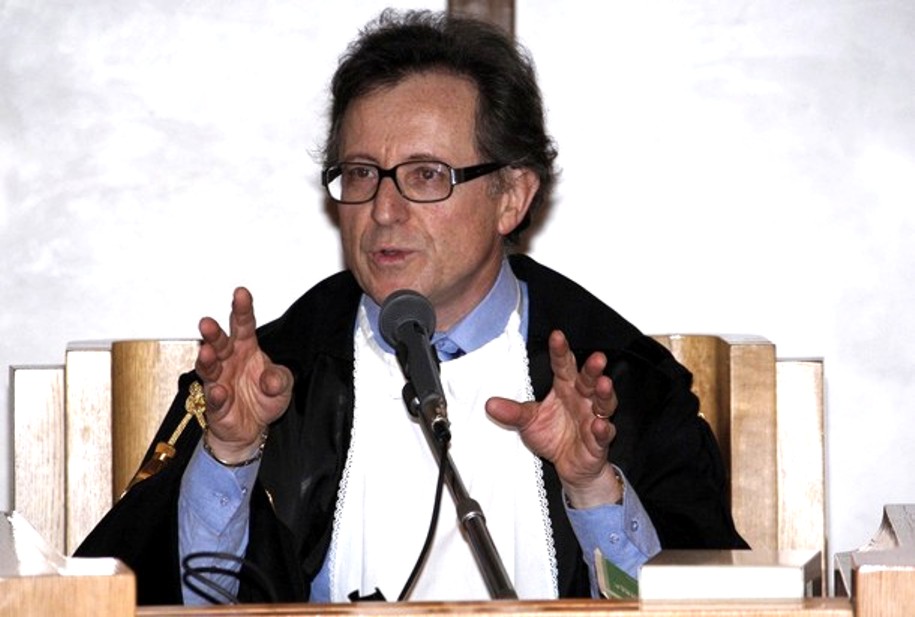
[Above: Dr Giancarlo Massei, the president of the Court]
Our intention with this new series of posts is to show how thorough the trial was, and how compelling the Massei Report on the grounds for the Knox-Sollecito sentence is.
At the beginning of the trial, the witness counts were considerable: approximately 90 for the prosecution, 60 for the civil plaintiffs, 90 for the defence of Raffaele Sollecito, and 65 for the defence of Amanda Knox.
However, a large number of witnesses for both Amanda Knox and for Raffaele Sollecito were removed from the witness listing. Thus the actual number of people testifying was lower than originally expected.
Here is a comprehensive list I have compiled, made by going through the Massei Report, picking out the witnesses, and noting what they testified about. If I had the information available, I have noted where a witness was specifically called by the defence of either of the then defendants.
Officers Of The Court
- Judges: Dr Beatrice Cristiani and Dr Giancarlo Massei, the president of the Court.
- Prosecutors: Public Ministers Dr Manuela Comodi and Dr Giuliano Mignini.
- Interpreter for Amanda Knox: Dr Anna Baldelli Fronticelli.
The Legal Teams:
- For the family of Meredith Kercher: Francesco Maresca and Serena Perna.
- For Diya “Patrick” Lumumba: Carlo Pacelli.
- For Aldalia Tattanelli (the owner of the house): Letizia Magnini.
- For Amanda Knox: Luciano Ghirga and Carlo Dalla Vedova.
- For Raffaele Sollecito: Giulia Bongiorno, Daniela Rocchi and Luca Maori.
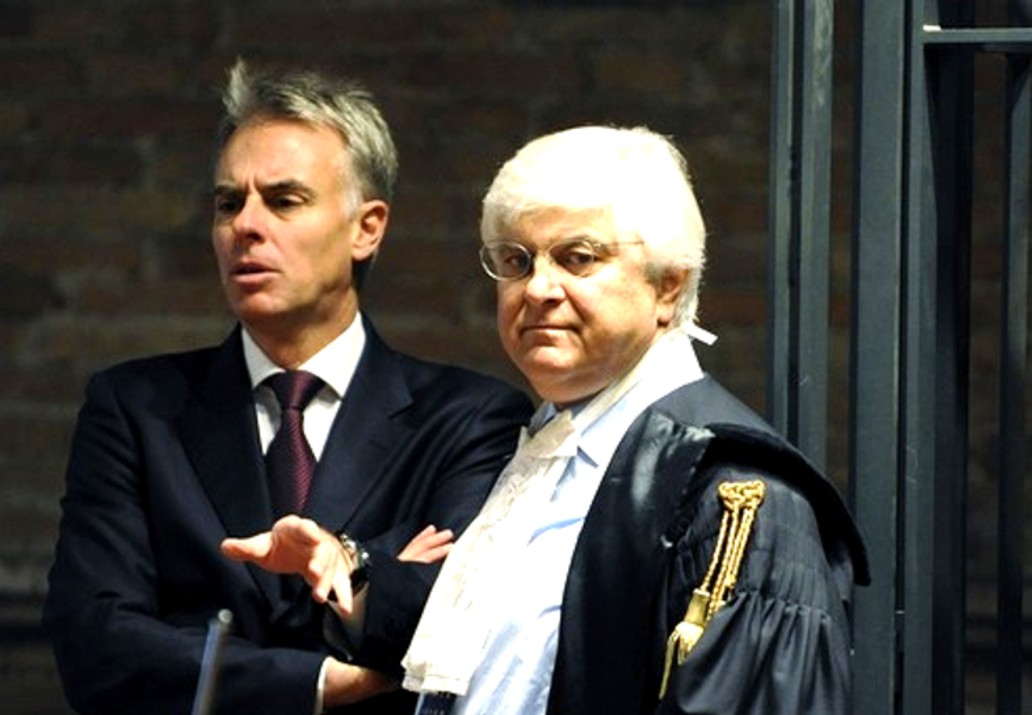
[above: Amanda Knox’s legal team]
Witnesses
The following is a list of witnesses and a brief note as to the evidence they presented. I am not detailing their arguments here, merely indicating the areas the witnesses were heard in. For full details of the evidence and the court’s arguments please read the Massei Report in full and the summaries coming up.
- Amanda Knoxtestified while not under oath at the request of her defence and the legal team representing Diya Lumumba. Her testimony was heard on 12th and 13th June 2009. Raffele Sollecito made a couple of interventions from his seat beside his three lawyers, but he did not get up on the stand.
- Mrs. Elisabetta Lana and her son, Alessandro Biscarini. They discovered two mobile phones, both belonging to Meredith Kercher (one was registered to Filomena Romanelli, Meredith’s flatmate), in their garden at Via Sperandio.
- Dr. Filippo Bartolozzi - at the time Manager of the Department of Communications Police for Umbria - Dr. Bartolozzi received the mobile phones from Mrs Lana, the first at approximately 11.45 to 12.00hrs on 2nd November 2007, the second at approximately 12.15 to 12.20 hrs. He traced the first phone to Filomena Romanelli and, at noon, despatched two officers to her address to investigate why her phone was in Mrs. Lana’s garden.
- Inspector Michele Battistelli and Assistant Fabio Marzi - the two officers despatched by Dr. Bartolozzi. They arrived at 7 Via della Pergola at a little after 12.30 hrs - they found Amanda Knox and Raffaele Sollecito sitting outside the house. They gave evidence about the circumstances leading up to the discovery of Meredith’s body and with regards to securing the scene whilst awaiting the Carabinieri and Scientific Police.
- Filomena Romanelli who was Meredith’s flatmate gave evidence regarding the phone she had lent to Meredith. She also detailed when she had moved into the flat at 7 Via della Pergola and the living arrangements. She told of her plans for the 2nd November and how a worrying phone call from Amanda Knox led to her calling her back and returning to her home earlier than planned. A key point of Ms. Romanelli’s evidence was her disagreement with Amanda Knox over when Meredith locked her door - Ms. Romanelli stated that Meredith had only once locked her door and that was when she had returned to England for a few days.
- Paola Grande, Marco Zaroli and Luca Altieri - the other young people who were at the property when Meredith’s body was discovered. Mr. Altieri broke down the door to Meredith’s room.
- Laura Mezzetti - the fourth flatmate in the upstairs flat at number 7 Via della Pergola. She testified with regards to the living arrangements and also that Amanda Knox is an early riser, a “morning person”.
- Robyn Butterworth, Amy Frost, Sophie Purton and Nathalie Hayward - Meredith’s friends from England. They testified as to when they last saw Meredith and described the behaviour of Amanda Knox and Raffaele Sollecito at the Police Station in the evening of 2nd November 2007. They also testified that Meredith had no plans after returning home at around 21.00 hrs on 1st November other than to study and have a rest as they had been out late the previous night and believed that they had classes the next day. Meredith’s friends did not know of Rudy Guede and had not heard Meredith mention his name.
- Giacomo Silenzi, one of the young men living in the flat underneath Meredith’s flat. He was Meredith’s boyfriend.
- Stafano Bonassi, Marco Marzan and Riccardo Luciani the other tenants of the downstairs flat. Along with Mr. Silenzi they testified as to the the interactions between themselves and the girls upstairs, the gatherings they held, the fact that Rudy Guede was known to Amanda Knox. They testified as to Rudy Guede’s actions at their house. They gave evidence of having met or known of Raffaele Sollecito and his relationship with Amanda Knox.
- Giorgio Cocciaretto a friend of the young men in the downstairs flat testified with regards to knowing Rudy Guede through playing basketball and having seen him at the 7 Via della Pergola house when both Meredith and Amanda Knox were present.
- Rudy Guede availed himself of his right not to participate in the trial of Amanda Knox and Rafaelle Sollecito. Judge Massei details Rudy Guede’s involvement based upon the evidence available in order to complete the reconstruction of events of 2nd November as he was charged alongside Amanda Knox and Raffaele Sollecito.
- Marta Fernandez Nieto and Caroline Espinilla Martin - two young ladies living in the flat above Rudy Guede, they testified than on the night of 31st October they had been in the presence of Rudy Guede and that the only girl they saw him dance with was a “blonde girl with long smooth hair”.
- Gioia Brocci from the Questura of Perugia who testified with regards to a trail of shoe prints leading from Meredith’s room to the exit of the flat getting fainter as they went. Ms. Brocci also testified as to the lack of signs of climbing on the wall below Filomena Romanelli’s window. She also collected evidence from the bathroom next to Meredith’s room.
- Sergeant Francesco Pasquale testified as to the possibility of breaking into the flat though the window in Filomena Romanelli’s room. Sergeant Pasquale was a consultant for the defence.
- Maria Antonietta Salvadori Del Prato Titone, Paolo Brocchi, Matteo Palazzoli and Cristian Tramontano testified with regards to previous incidents involving or possibly involving Rudy Guede.
- Edda Mellas , Amanda Knox’s mother. She testified as to communications with her daughter on the 2nd November amongst other things.
- Antonella Negri a teacher at the University who taught Amanda Knox and who testified as to her diligence as a student.
- Francesco Sollecito, father of Raffaele Sollecito. He testified as to his son’s character and about his communications with his son. He also spoke of his son’s relationship with Amanda Knox.
- Antonio Galizia, Carabinieri station commander in Giovinazzo, the Sollecito family’s home town. He testified that in September 2003 Raffaele Sollecito was found in possession of hashish.
- Jovana Popovic testified as to the presence of Amanda Knox at Raffaele Sollecito’s home at two points in time on the evening of 1st November 2007.
- Diya “Patrick” Lumumba was Amanda Knox’s employer at “Chic”. He testified that he has sent her a text message excusing her from work on the evening of 1st November.
- Rita Ficcara Chief Inspector of the State Police - to whom Amanda Knox delivered a written statement composed whilst she was awaiting to be transferred to Capanne Prison.
- Antonio Curatolo - Mr. Curatolo testified as to having seen Amanda Knox and Raffaele Sollecito at the basketball court in front of the University (the Piazza Grimana) in the evening of 1st November 2007.
- Maurizio Rosignoli - who runs a kiosk in the Piazza - testified with regards to the timing of buses at the Piazza Grimana thus corroborating times in Mr. Curatolo’s evidence.
- Alessia Ceccarelli - who worked managing Mr. Rosignoli’s kiosk - gave evidence as to Mr. Curatolo’s presence in the Piazza.
- Marco Quintavalle, who runs the shop “Margherita Conad”, testified he had seen Amanda Knox at 07.45 hrs on 2nd November, she was waiting for him to open his shop, she went to the section of the store that had items such as groceries, toilet paper and cleaning products but he did not serve her at the till so could not specify what she bought if anything. He testified that he knew Raffaele Sollecito as he was a regular customer.
- Officer Daniele Ceppitelli gave evidence with regards to the 112 calls made by Raffaele Sollecito at 12.51 and 12.54 hrs on 2nd November. In these calls Raffaele Sollecito declared that nothing had been stolen from the flat.
- Nara Capezzali, Antonella Monacchia and Maria Ilaria Dramis gave evidence of unusual sounds and activity coming from the area around 7 Via della Pergola - namely a scream and the sound of running footsteps.

[one of Sollecito’s three lawyers with Sollecito]
Expert Witnesses
- Dr. Lalli, the Coroner, he performed the post mortem and ascertained the cause of death and a “time window” when death was likely to have occurred. He put the time of death between 20.00 hrs on 1st November 2007 and 04.00 hrs the following day.
- Dr. Domenico Giacinto Profazio was head of the Perugia Flying Squad at the time of Meredith’s death. He gave evidence regarding the investigative procedures and safeguards including the physical security of the property.
- Dr. Marco Chiacchiera, deputy director of the Perugia Flying Squad also gave evidence regarding the scene and investigation.
- Monica Napoleoni, Deputy Commissioner of the State Police gave evidence regarding the scene and investigation. She also testified as to Raffaele Sollecito’s desire to remain with Amanda Knox.
- Mauri Bigini a chief inspect at the Flying Squad confirmed the evidence given by Profazio and Napoleoni.
- Armando Finzi a chief inspector at the Flying Squad gave evidence regarding the examination of Raffaele Sollecito’s flat and the collection of the knife which is now termed “the Double DNA Knife” (Exhibit 36).
- Stefano Gubbiotti and Zugarini Lorena confirmed the evidence regarding the search of Raffaele Sollecito’s flat.
- Dr. Giunta from the Scientific Police in Rome directed the detection of latent prints at the scene.
- Dr. Patrizia Stefanoni from the Scientific Police in Rome collected biological trace evidence for analysis. She also performed the analysis of DNA evidence and testified extensively on all aspects of DNA - from the background science, through the collection and the testing methods employed to the analysis.
- Professor Mauro Marchionni, Dr. Vincenza Liviero and Professor Mauro Bacci, the three consultants appointed by the Public Ministers to analyse the forensic medical evidence testified as to various aspects of Dr. Lalli’s report including the cause of death, timing of death, the sexual assault and the wounds. They reported on the degree of compatibility of the knife - Double DNA Knife, Exhibit 36 - with the wounds suffered.
- Professor Gianaristide Norelli, the consultant for the civil party, is a forensic police doctor. He testified with regards to the time and cause of death and the sexual assault against Meredith. He testified as to the degree of compatibility of the Double DNA Knife with the wounds suffered.
- Professor Francesco Introna, a consultant appointed by Raffaele Sollecito’s defence testified with regards to the forensic medical evidence (cause and time of death, the sexual assault). His opinion is that the murder was committed by one person and that the Double DNA Knife was not the weapon used to inflict the large wound on the left of Meredith’s neck. He hypothesised that Meredith was already undressing at the end of the day when she was surprised by her sole attacker who attacked from behind.
- Professor Carlo Torre, a consultant appointed by Amanda Knox’s defence testified with regards to the same areas as described above. In his opinion the Double DNA knife was not the knife used to inflict the large wound on the left of Meredith’s neck. He believed a stabbing from the front was the most likely dynamic, and he saw nothing that would lead him to believe there was more than one attacker.
- Professor Vinci, a consultant appointed by Raffaele Sollecito’s defence, he testified with regards to the stains on the bed sheet -which appeared to be made in blood, outlining a knife. Professor Vinci also testified with regards to footprints found in the flat.
- Dr Patumi, a consultant appointed by the defence of Amanda Knox, testified with regards to the neck wounds suffered and also with regards to the genetic evidence as detailed by Dr. Stefanoni.
- Professor Anna Aprile, Professor Mario Cingolani and Professor Giancarlo Umani Ronchi, all independent consultants appointed by the judge (GIP) at the preliminary hearing. Professor Aprile testified specifically on the question of the sexual assault, Professors Cingolani and Umani Ronchi again considered the evidence with regards to the cause and time of death and the compatibility of the Double DNA Knife with the large wound on the left of Meredith’s neck.
- Dr. Torricelli, the consultant for Meredith Kercher’s family, testified and gave her opinion on the genetic evidence as detailed by Dr. Stefanoni.
- Dr. Sarah Gino, a consultant appointed by the defence of Amanda Knox, testified and gave her opinion on the genetic evidence as detailed by Dr. Stefanoni.
- Professor Tagliabracci, a consultant appointed by Raffaele Sollecito’s defence, testified and gave his opinion on the genetic evidence as detailed by Dr. Stefanoni. He also gave evidence with regards to the effects of certain drugs.
- Marco Trotta, Claudio Trifici and Gregori Mirco officers of the Postal Police, gave evidence with regards to the seized computer equipment and also with regards to internet activity at the home of Raffaele Sollecito.
- Mr. Fabio Formenti, the technical consultant appointed by Raffaele Sollecito’s defence - observed the Postal Police’s analysis of the computer equipment.
- Dr Michele Gigli and Dr. Antonio D’Ambrosio, consultants appointed by Raffaele Sollecito’s defence, testified with regards to the computer and internet evidence.
- Chief Inspector Letterio Latella gave evidence with regards to mobile phones and how they pick up signals from base stations which cover certain areas, he also testified with regards to the call records of the mobile phones of the defendants, victim and others. He detailed how a connection to the network was picked up by the base stations and how the location of the phone can be approximated through knowing which base station was used. He was able to tell the court which connections to Meredith’s two phones were made from her own flat and which from Mrs. Lana’s garden.
- Assistant Stefano Sisani provided evidence with regards to both landline telephone services and mobile phone services.
- Bruno Pellero an engineer appointed by Raffaele Sollecito’s defence to give evidence with regards to telephonic communications.
- Dr. Lorenzo Rinaldi, Principal Technical Director of the State Police, director of the three sections which compose the Identity Division of the ERT, gave evidence regarding shoe prints and footprints (including those highlighted by the use of luminol.
- Chief Inspector Pietro Boemia, who worked alongside Dr. Rinaldi.
- Chief Inspector Claudio Ippolito a consultant who reported on shoe prints - appointed by the public minister.

[Background: the Judges and jury (lay judges) for the trial]>
Wednesday, June 02, 2010
Calunnia Claims At The Core Of The Problem For Amanda Knox - And Her Parents
Posted by Peter Quennell
Here is Amanda Knox claiming mistreatment as the reason why she falsely fingered Patrick Lumumba.
This was the court CCTV camera feed to the press-room on 12 June 2009. It was legitimate for the reporters there to capture it.
Our Italy-based Italian-speaking posters Fiori and Nicki both observed that to many or most Italians. Knox’s two days on the stand rang pretty hollow. She apparently needed to come across as a lot more fragile for the claims in the video to ring true.
Yesterday at the first hearing to set the date for Knox’s new trial, the number of police interrogators who are considered to have been targets of calunnia Amanda Knox was stated as twelve.
They will presumably all be testifying both at Knox’s new trial in October, and at the trial of Curt Knox and Edda Mellas, who allegedly repeated Knox’s claims on TV, and for whom the first hearing is coming up on 7 July.
They could face prison time and/or fines.
Judge Claudia Matteini observed that her presiding over the early hearings into Meredith’s case in 2008 (and denying Knox house arrest, a denial believed based in part on a psychological profile never made public) was not automatically a reason for her being replaced as a judge in this new case.
Knox had not made the claims you can see in the video at the time Judge Matteini was presiding. However, she agreed with what seems a reasonable defense request that a higher court should take the question of a possible conflict of interest under review.
She stated that the appeals court will issue a decision on who should be the judge for the new trial on 17 June.

